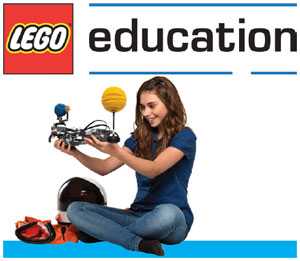An industry advisory panel of educators shares strategies to help teachers – regardless of their tenure – implement education technology in the classroom
 The LEGO Education Advisory Panel (LEAP) advises LEGO Education, the education division within the LEGO group, on how to meet the needs of educators and students. The panel consists of 50 educators, across all levels of education, who are experienced with the trials and triumphs of using unconventional teaching tools in the classroom.
The LEGO Education Advisory Panel (LEAP) advises LEGO Education, the education division within the LEGO group, on how to meet the needs of educators and students. The panel consists of 50 educators, across all levels of education, who are experienced with the trials and triumphs of using unconventional teaching tools in the classroom.
Drawing from our experience using a wide gamut of education technology, we compiled the following list of tips and tricks to help teachers —regardless of their tenure —implement education technology in their own classroom.
1. Be sure to teach the concept that failure is an important and expected part of the process. What we learn from each failure or mistake is the important part and will lead to the next version, or improved iteration in the problem solving process.
– Beth Brubaker, grades 1-8 Project Specialist, North Idaho STEM Charter Academy
2. Remember that when lesson planning at home, you should also test any new website, app or tool on the school computers or tablets you’ll be using with students. It’s always a bummer to find out mid-lesson that the school’s filter has blocked the resource or that there are compatibility issues that must be fixed in order for it to work correctly.
– Breigh Rhodes, 2nd grade, Rollins Place Elementary School
3. Make sure to read the terms of service and privacy statement for apps and websites regarding the age of the user. Let parents know how the tool with be used in class and obtain their permission.
– Leanna Prater, District Technology Resource Teacher, Fayette County Public Schools
4. Provide daily opportunities for students to be creative with technology as a tool to support curriculum objectives in a variety of ways. Students will quickly learn to use the technology made available to them as they collaborate and work to research, explore, and produce a final product or project. Student engagement involving technology is most successful when students are given the opportunity to employ technology daily in a variety of ways and create projects that show their level of content mastery.
-Mary Meadows, Curriculum and Instruction Coordinator, Villa Duchesne and Oak Hill School
5. Don’t solve problems for your students. Provide support, give hints, teach the basics, but try not to solve the problem for them. When I find myself operating the technology myself, I know I’m doing too much. I also tell the kids the same thing when I see them doing the work for other students, however good the intention.
-John Heffernan, Technology Coordinator, Williamsburg Elementary School
6. Cultivate a good (great) relationship with your technology staff. But remember, they exist to make technology work for you, not to tell you what technology is acceptable for you to use. This is a fine line to walk sometimes.
-Ian Chow-Miller, Teacher, Frontier Middle School, Graham, WA
The LEGO Education Advisory Panel (LEAP) represents grades K-12, and will collaborate with LEGO Education to develop classroom solutions and curriculum that elevate STEM concepts, and 21st century learning skills.
- Guidance counselors could help female high schoolers erase the STEM gender gap - April 16, 2024
- How video coaching inspires teacher self-reflection - April 15, 2024
- Is it the school, or the students? - April 15, 2024

Comments are closed.